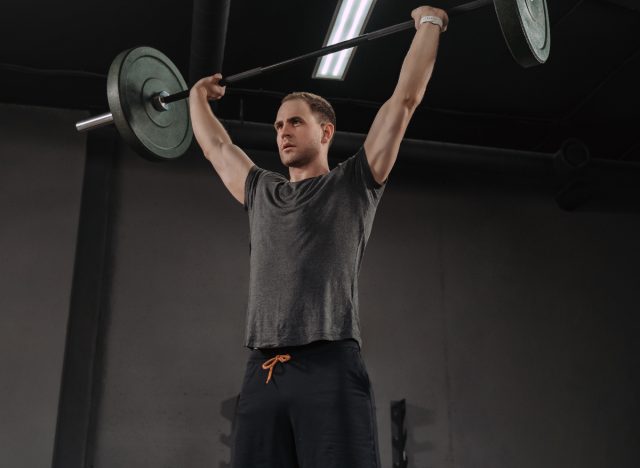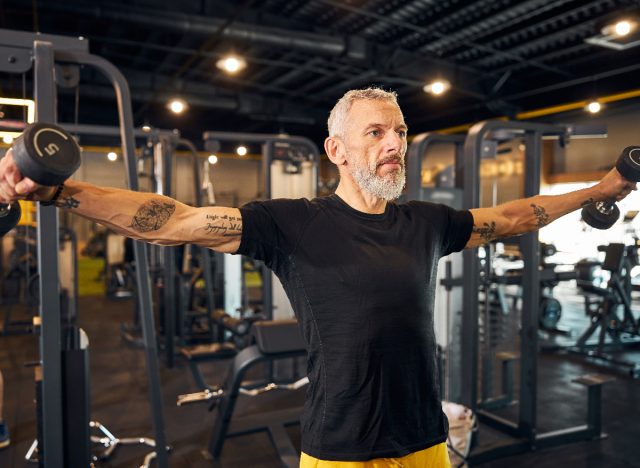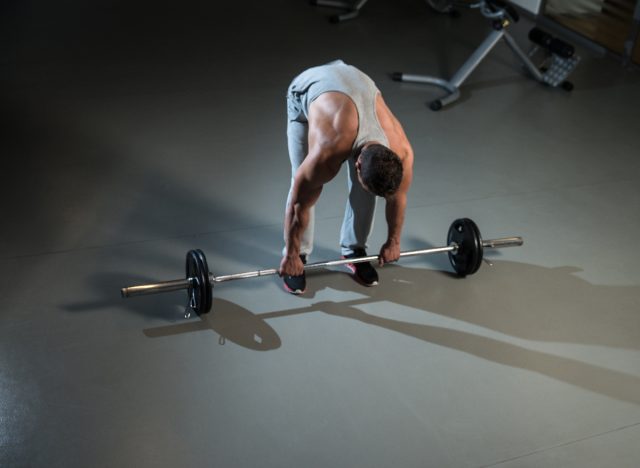From sculpting sleeve-busting biceps to building up 3D shoulders, getting your upper body into great shape goes beyond simply looking great in a muscle shirt. But don’t get things twisted: According to Lincoln Nutrition & Fitness, strengthening your shoulders isn’t the easiest of goals to achieve. Plus, you can suffer from injury if you work your shoulders incorrectly. But, when trained properly, having strong shoulders comes with plenty of benefits. We chatted with an expert who shares five exercises to build up your 3D shoulders. Add them to your routine, and watch your shoulders turn into boulders!
A strong, muscular set of shoulders will help you safely perform daily activities, chores, and tasks like tossing a football around with your kids, taking your pup to the trails, and lifting up heavier boxes and grocery bags, Lincoln Nutrition & Fitness explains. That’s why we chatted with Tyler Read, a personal trainer who’s been in the health and fitness world for the past 15 years, has a BS in kinesiology, is certified through NASM, and is the founder of PTPioneer.com, who breaks down the top five exercises to build up your 3D shoulders.
“Resistance exercise with moderate to heavy weight targeting the muscles in the shoulder is the only way to build muscle,” Read explains.
Keep reading to learn more about these resistance exercises. Perform two to three sets of these moves one to two times per week. And next, don’t miss Build Up Your Boulder Shoulders With These 5 Exercises, Trainer Says.
Barbell or Dumbbell Overhead Press


Read points out that you can perform the overhead press with a barbell or dumbbell. According to BarBend, to set up, you’ll grab a barbell that’s racked level to the top of your chest. Your hands should be a bit outside your shoulder span. Unrack the bar, making sure your wrists are lined up with your elbows. Step back, and place your feet shoulder-width distance apart. Tuck your chin in and ready your core muscles before pressing the barbell above your head. Then, using control, lower the barbell down.
READ RELATED: Boosting Your Nutrition with Fall Produce: Insights from a Registered Dietitian
Dips
This move activates all of the “pushing muscles” in your upper body, Legion Athletics explains. To perform dips, you’ll take hold of the dip bar handles, then push your body up by slightly jumping and extending your arms so they’re totally straight. Your hands should be stacked under your shoulders. Then, bend at your elbows so that your arms form 90-degree angles to move into a “dip.” Push up to head back to the position you started in.
Lateral Raises


The dumbbell lateral raise is a stellar exercise if you want to add width to your upper body, Muscle & Strength explains. To perform it, stand up straight with a dumbbell in each hand. Your palms should face inward. Once you’re in the proper position, gradually raise the weights up to the height of your shoulders. Hold this position, then gradually lower the dumbbells back down to where you started.
Front Raises
Now that you’ve completed lateral raises, it’s time to move on to front raises. By performing this exercise, you’ll boost the mobility of your shoulders, activate various muscle groups in your upper body, and tone the muscles in your shoulders—especially your front delts, according to MasterClass. Hold a dumbbell in each hand, and place your feet shoulder-width distance apart. Bend your knees just a bit. The weights should be in front of you, making sure your palms are in toward your body. Then, press the weights up to align with your shoulders. Hold this position before lowering the dumbbells back down.
Rear Delt Row


To perform this final exercise, hinge your hips back, and bend down to grab a loaded barbell, Legion Athletics explains. You should utilize an overhand grip, and place your hands a bit outside your shoulder span. Your feet should also be shoulder-width distance apart. Maintain a totally flat back and keep it parallel to the ground during this exercise. Allow your arms to extend down toward the floor. Now, it’s time to row. Pull the barbell up to your chest, then, using control, lower it back down.
Alexa Mellardo
Source:









